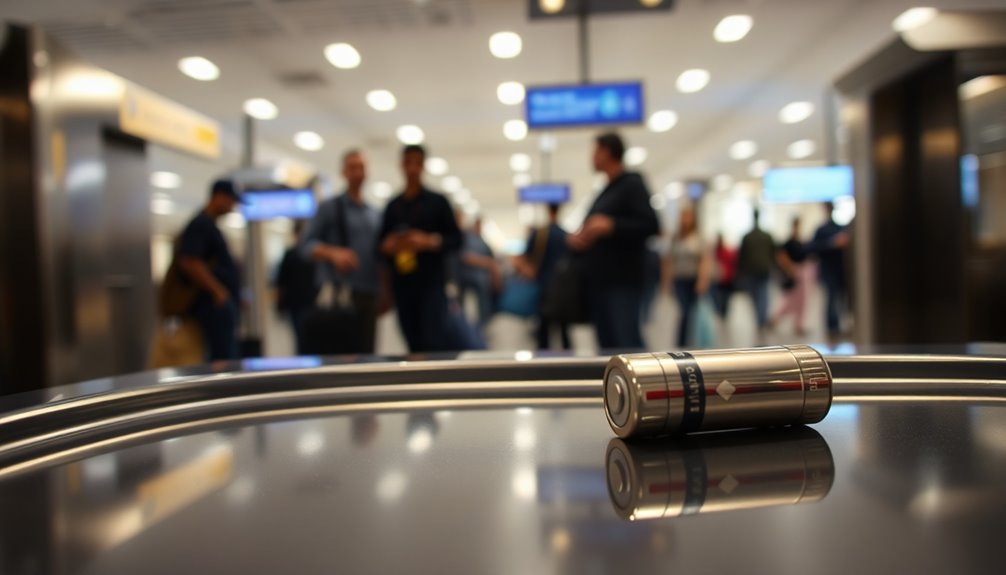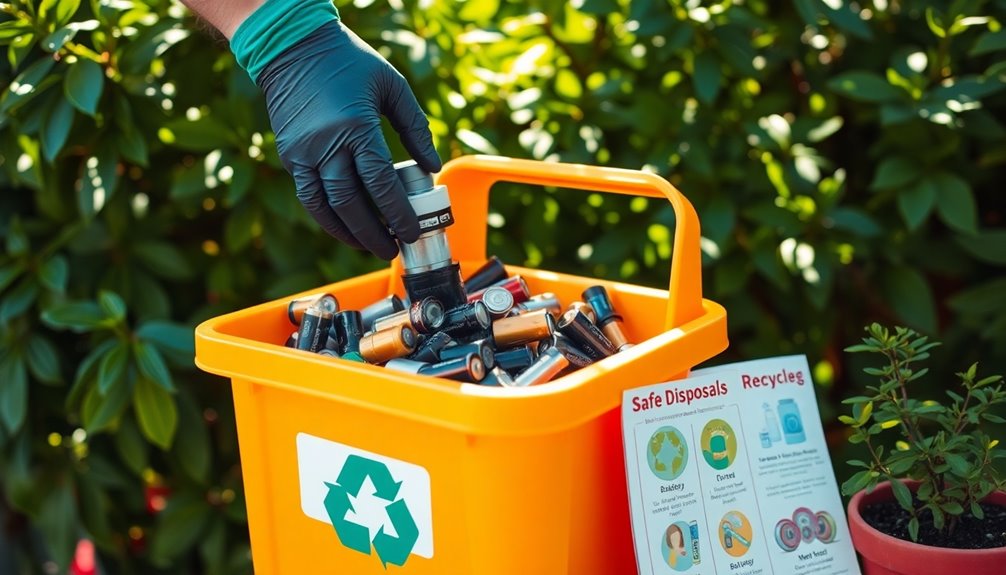You can bring as many AA batteries as you want on a plane, but it's better to keep them in your carry-on. While TSA allows them in both checked and carry-on luggage, carrying them on reduces fire hazards. Always store batteries in their original packaging or use protective cases to prevent short circuits. Loose batteries must be insulated and packed separately. Remember to follow your airline's specific guidelines, as some may have added restrictions. Understanding these rules will help guarantee a smooth journey, so keep exploring what else you need to know about battery transport on flights.
Key Takeaways
- TSA allows unlimited AA batteries in carry-on luggage, but it's safer to transport them there to minimize fire hazards.
- Keep AA batteries in original packaging or protective cases to prevent short circuits during transport.
- All battery-powered devices must be powered off during the flight, whether in carry-on or checked baggage.
- Avoid placing loose batteries in checked luggage; they should be stored separately and insulated.
- Familiarize yourself with specific airline policies regarding battery transport, as they may have additional restrictions.
Understanding Battery Regulations
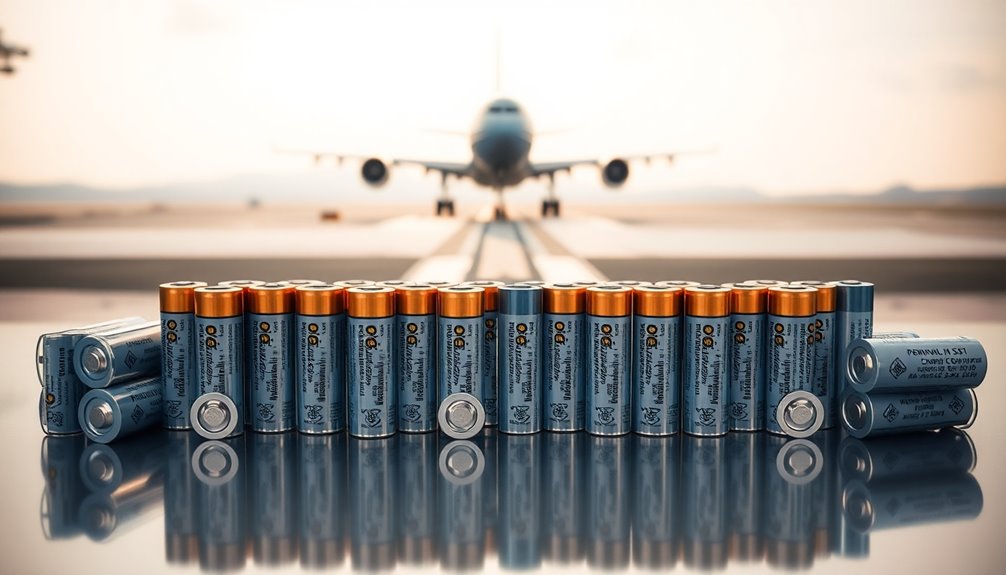
When you're packing for a flight, it's crucial to understand the regulations surrounding batteries, especially AA batteries.
According to TSA regulations, you can bring unlimited quantities of AA batteries in both carry-on and checked luggage. However, it's safer to transport them as batteries in carry-on luggage.
Make certain you keep your AA batteries in their original packaging or use protective cases to prevent short circuits. If you're carrying spare batteries, insulate and store them separately to avoid accidental activation.
Also, always check the airline-specific rules, as some airlines may have additional restrictions or recommendations regarding battery transport.
Being informed will help guarantee a smooth journey without unexpected issues.
Carry-On vs. Checked Baggage

When it comes to packing AA batteries, you've got options for carry-on and checked baggage.
However, carrying them in your carry-on is usually the safer choice, as it helps avoid potential hazards.
Let's explore the regulations and packing tips to guarantee your batteries travel safely.
Carry-On Battery Regulations
AA batteries can be packed in unlimited quantities in your carry-on luggage, making them a convenient choice for travelers.
While you can also pack AA batteries in checked bags, it's safer to keep them in your carry-on baggage to minimize potential hazards.
If you're carrying loose batteries, make sure they're protected from short circuits by keeping them in their original packaging or using protective cases.
When you go through security, it's important to inform personnel about any batteries in your carry-on to guarantee a smooth screening process.
Always check your specific airline's guidelines, as some may have additional restrictions on the number of batteries allowed in carry-on or checked baggage.
Checked Baggage Restrictions
While carry-on regulations offer flexibility for bringing AA batteries, checked baggage presents different challenges.
It's crucial to know that batteries in checked baggage aren't recommended due to the increased risk of short circuits and potential fire hazards. Airlines typically enforce strict checked baggage restrictions regarding batteries, and it's best to avoid placing them in your checked luggage altogether.
If you must transport them, make sure they're stored in their original packaging or transported in a manner that prevents terminal contact.
Remember, all battery-powered devices should be completely powered off during the flight, regardless of their location.
Always check with your airline's specific policies, as they may have additional restrictions on transporting AA batteries.
Safety Packing Tips
To guarantee a smooth journey, it's essential to follow safety packing tips for transporting AA batteries.
You can pack unlimited AA batteries in your carry-on, but make sure they're insulated to prevent short-circuiting. Spare AA batteries should ideally stay in their original packaging or a protective case.
If you have loose batteries, taping the terminals can further prevent accidental activation and keep you compliant with safety regulations.
While it's possible to put AA batteries in checked baggage, carrying them in your carry-on is advisable to avoid mishandling hazards.
Always check your specific airline's guidelines, as they may have additional restrictions or recommendations regarding battery transport.
Safe travels!
Packing Tips for Batteries
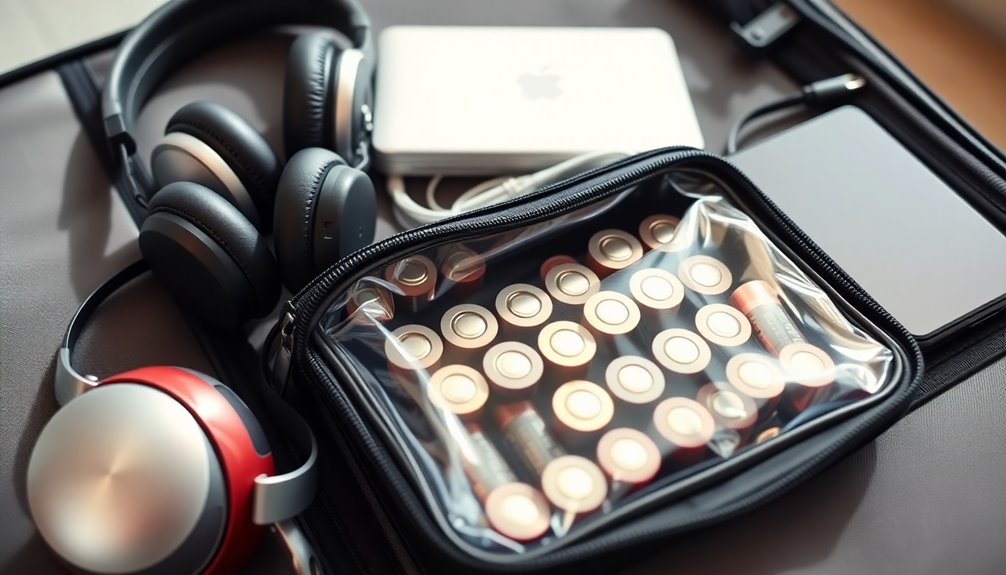
When packing batteries for your flight, keep a few essential tips in mind to guarantee safety and compliance.
First, always store spare AA batteries in their original packaging or use tape to cover the terminals. This helps prevent accidental activation and short circuits.
Remember, you should pack AA batteries in carry-on bags rather than checked luggage due to fire hazard concerns.
Consider using protective cases or pouches for individual batteries to safeguard against damage during transport.
Following these packing tips for batteries will assure you have a smooth travel experience while keeping safety a priority.
Finally, familiarize yourself with your airline's specific guidelines for battery transport to avoid any issues at the airport.
Airline-Specific Guidelines
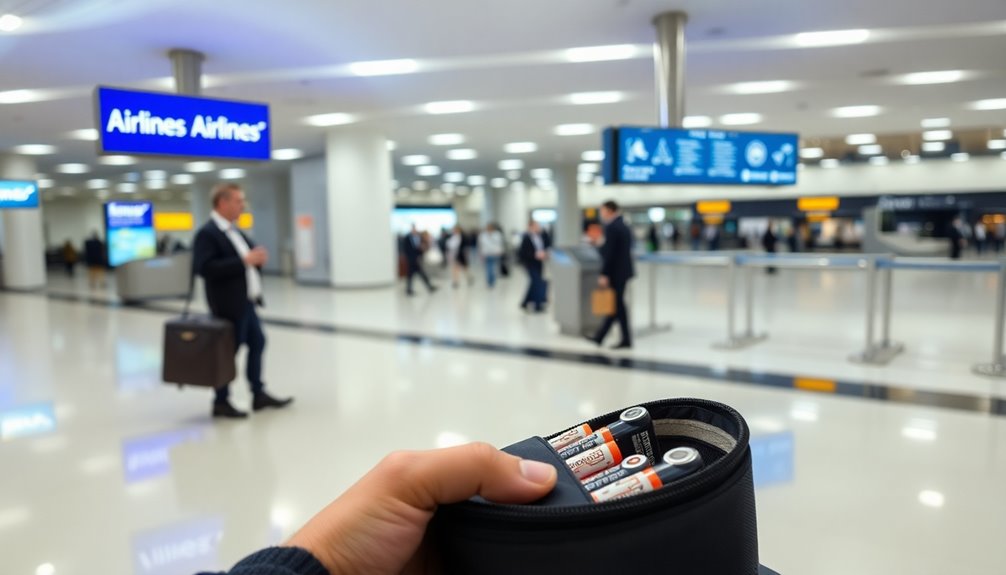
Before you head to the airport, it's important to check your airline's specific guidelines regarding AA batteries.
Most airlines allow AA batteries in both checked and carry-on luggage, but airline approval can vary. While the FAA permits unlimited quantities of dry cell alkaline batteries in your carry-on, some airlines may restrict the number of spare batteries you can carry.
To avoid issues, review your specific airline policies before traveling. It's also recommended to keep your batteries in their original packaging or use protective cases to prevent short-circuiting.
Finally, always inform security personnel about the presence of batteries in your luggage to guarantee a smooth screening process. Being prepared will help you navigate the rules easily.
Safety Precautions for Batteries
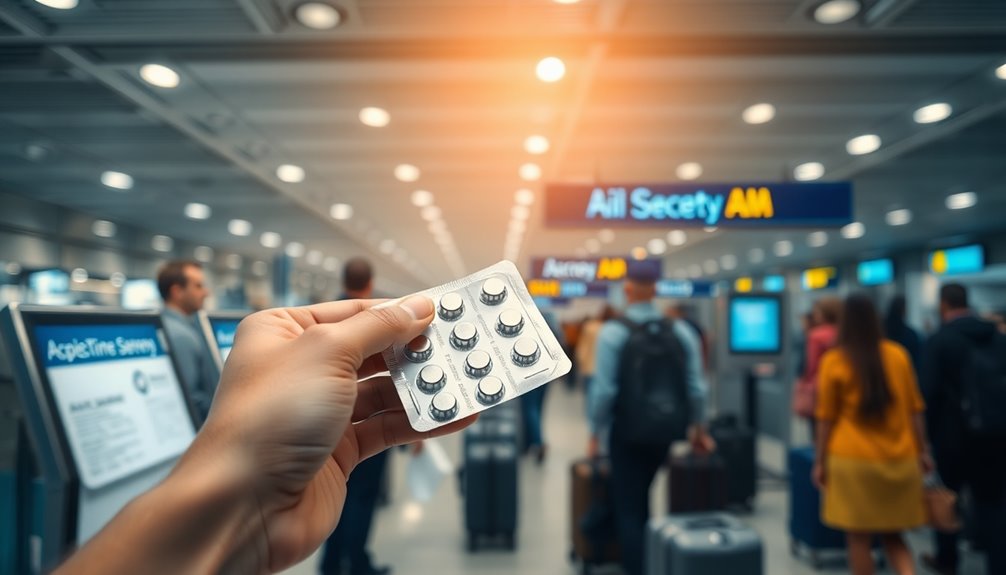
When you pack AA batteries for your flight, proper storage is key to ensuring safety.
Keep them in their original packaging or secure the terminals with tape to prevent any accidental activation.
Always remember to follow transportation guidelines to avoid issues during your journey.
Proper Battery Storage
Proper battery storage is essential for ensuring safety during air travel.
To keep your AA batteries secure and compliant, follow these guidelines:
- Store batteries in their original packaging or protective cases to prevent short-circuiting.
- Tape the terminals of loose batteries to avoid accidental activation.
- Keep spare batteries in your carry-on luggage rather than checked baggage for safety.
- Use a plastic bag or protective pouch to minimize the risk of damage or short circuits.
Transportation Guidelines Compliance
To guarantee a smooth travel experience, it's crucial to comply with transportation guidelines for AA batteries.
Batteries are generally allowed in unlimited quantities in your carry-on luggage, but you must store them in their original retail packaging or protective cases to prevent activation and short circuits.
The Transportation Security Administration (TSA) suggests taping the terminals of loose AA batteries for added safety during transport.
Always keep spare batteries in your carry-on rather than checked luggage to avoid overheating or fire risks.
Familiarizing yourself with airline-specific regulations can help prevent issues at security checkpoints.
Finally, always inform security personnel about your batteries during screening to expedite your clearance through security.
Prohibited Battery Types
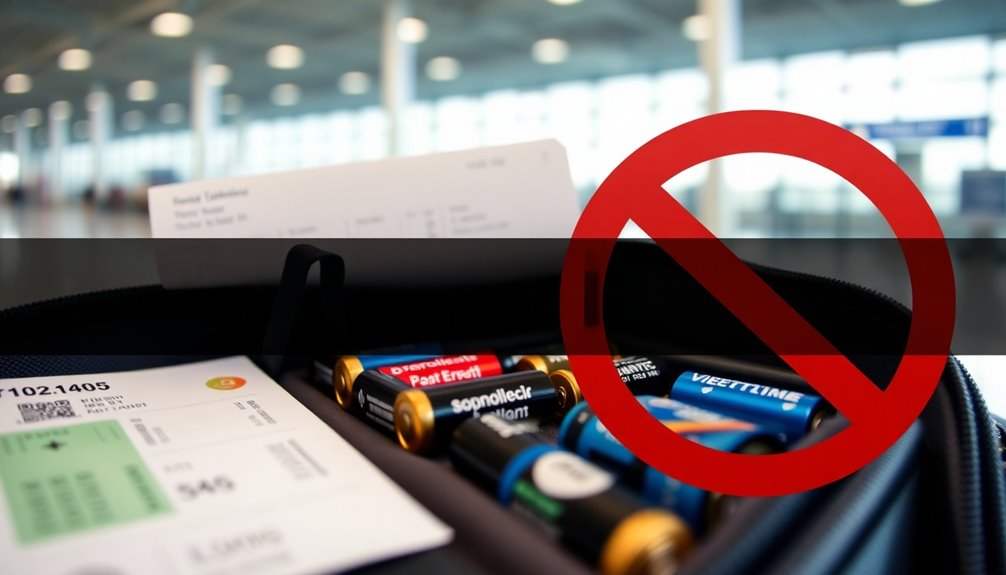
While most AA batteries are permitted for air travel, certain types of batteries are strictly prohibited due to safety concerns.
Understanding these prohibited battery types is essential to guarantee a smooth journey.
Here's what you need to know:
- Lithium metal batteries exceeding 2 grams aren't allowed.
- Damaged batteries pose a significant safety hazard and mustn't be brought on board.
- Loose batteries should be stored safely to prevent short-circuiting.
- Always check specific airline guidelines for additional restrictions.
Lithium-Ion Battery Limits
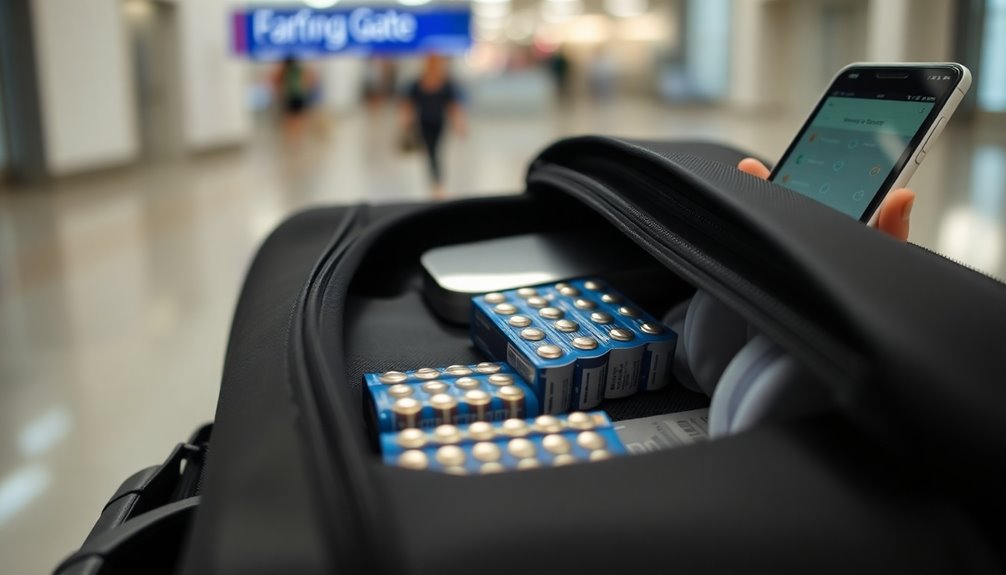
When traveling by air, understanding the limits on lithium-ion batteries is crucial for a hassle-free experience.
You can bring lithium-ion batteries in your carry-on luggage, but they shouldn't exceed a watt-hour (Wh) rating of 100. If your battery falls between 100-160 Wh, you'll need airline approval and can only carry two spare lithium-ion batteries.
Make certain to pack spare lithium-ion batteries in protective pouches or plastic bags to prevent short circuits. Always check your battery's watt-hour rating, usually found on the label or in the device manual, to guarantee compliance.
Common Travel Mistakes
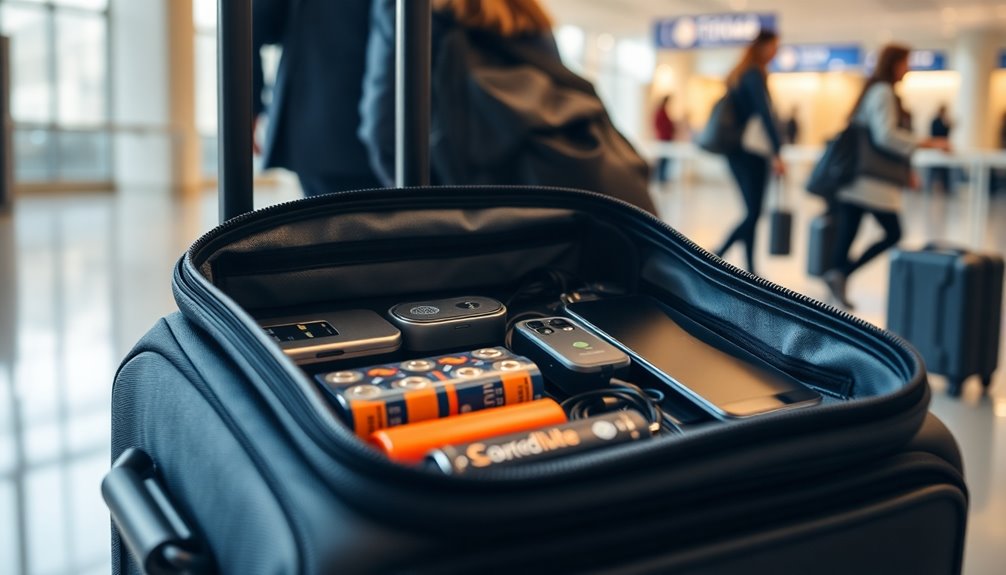
Many travelers overlook essential guidelines regarding battery transport, leading to unnecessary complications at security checkpoints.
You might think all batteries can be packed in checked luggage, but AA batteries should always be in your carry-on. Not checking your airline's specific battery policies can also result in surprises.
Here are some common mistakes to avoid:
- Insulating loose batteries; keep them in original packaging or tape terminals.
- Forgetting to turn off battery-powered devices before boarding.
- Not declaring multiple batteries to security personnel for smoother screening.
- Ignoring limits on spare batteries, especially for lithium types.
Being aware of these mistakes can enhance your travel experience and help you avoid delays at the airport.
Important Security Procedures
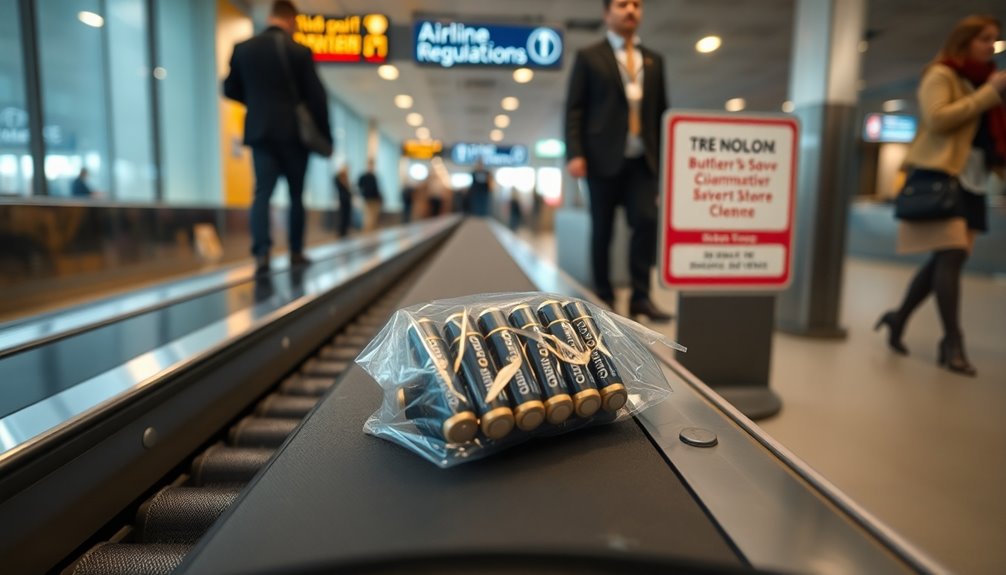
Understanding important security procedures for transporting AA batteries can save you time and hassle at the airport.
You can bring unlimited quantities of AA batteries in your carry-on, but it's essential to keep them safely stored in their original packaging or use protective cases. This helps guarantee they're protected from accidental short circuits.
When you go through security, inform the personnel about the batteries to facilitate the clearance process. Also, remember that all battery-powered items in your carry-on must be completely powered off to prevent accidental activation.
Familiarizing yourself with your specific airline's policies on battery transport will help you avoid delays or the risk of having your items confiscated at security checkpoints.
Latest Regulatory Updates
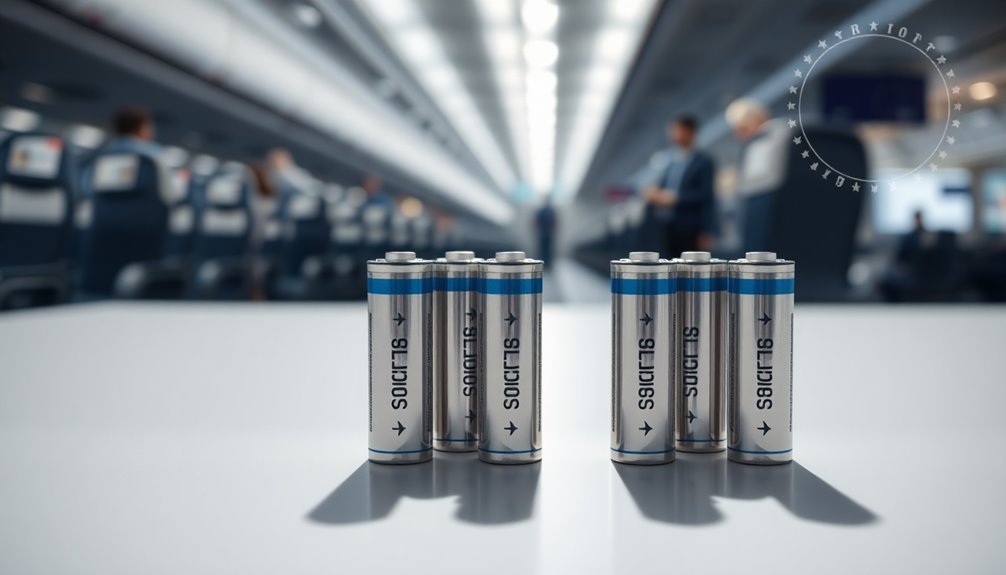
As of October 2023, you can bring unlimited AA batteries in your carry-on, but there are still important compliance requirements to follow.
Make sure to protect your batteries from short circuits and check your airline's specific rules.
Understanding these updates helps you avoid any enforcement issues while traveling.
Recent Changes Overview
With the latest regulatory updates, travelers can now pack AA batteries in unlimited quantities in their carry-on luggage, as long as they're safeguarded against short-circuiting.
The TSA guidelines state that all dry cell batteries, including AA batteries, are allowed in carry-on without specific watt-hour restrictions.
However, it's crucial to note the limitations for rechargeable lithium batteries, which differ from standard AA batteries.
- Keep spare AA batteries in original packaging or protective cases.
- Always check with individual airlines for additional restrictions.
- Confirm batteries are protected from damage to avoid accidents.
- Familiarize yourself with TSA guidelines for a smoother travel experience.
Key Compliance Requirements
To guarantee a hassle-free travel experience, it is crucial to comply with the latest TSA regulations regarding AA batteries. You can pack unlimited quantities of AA batteries in your carry-on, but always store them carefully to prevent short circuits. Keep the batteries in their original packaging or place them in a separate plastic bag. For checked luggage, AA batteries are allowed, but carrying them in the cabin is safer. Remember, airlines might have additional restrictions, so check their policies before you travel. Compliance with these guidelines is not just recommended; it is required by Federal Law.
| Storage Method | Allowed |
|---|---|
| In Carry-On | Yes |
| In Checked Baggage | Yes |
| Must Prevent Short Circuits | Yes |
Enforcement and Penalties
Failure to comply with current regulations on battery transport can lead to severe consequences, including hefty fines and even imprisonment. Under U.S. Federal Law, violations regarding lithium batteries can result in penalties exceeding $250,000 and up to five years in prison.
Here are some key points to keep in mind:
- Spare lithium batteries must be in carry-on luggage only.
- Damaged batteries are strictly prohibited on flights.
- Airlines may impose limits on the number of batteries allowed.
- Improperly stored batteries can lead to confiscation and fines.
Stay informed about the latest regulations, as outdated knowledge can lead to non-compliance.
Frequently Asked Questions
Can You Fly With AA Batteries in Carry-On?
Yes, you can fly with AA batteries in your carry-on.
It's best to keep them in their original packaging to prevent accidental activation. If you have loose batteries, tape the terminals or store them in protective cases to avoid short-circuiting.
While you can also pack them in checked baggage, carrying them in the cabin is safer. Always double-check with your airline for any specific regulations before you travel.
How Many AA Batteries Can I Take on a Flight?
You can take an unlimited number of AA batteries on a flight, as they're considered safe for air travel.
While you can pack them in checked baggage, it's better to keep them in your carry-on to avoid potential short circuits.
Just make sure to store spare batteries in their original packaging or tape the terminals to prevent accidental activation.
Always double-check your airline's specific regulations before you fly, just to be safe.
Where to Put AA Batteries When Flying?
When flying, you should pack AA batteries in your carry-on luggage for safety.
Keep them in their original packaging or use protective cases to avoid short circuits. If you have loose batteries, tape their terminals to prevent accidental contact. This helps guarantee they stay safe during your journey.
Always double-check with your airline for any specific rules or restrictions regarding battery transport, as policies can vary between carriers.
Is an AA Battery a Lithium Battery?
An AA battery is like a trusty old friend; it's reliable but not a lithium battery. Instead, it usually uses alkaline or nickel-metal hydride chemistry.
You might find it surprising, but standard AA batteries don't fall under the same regulations as lithium batteries. They don't have the watt-hour limitations and can travel with you without special handling.
Just remember, knowing the difference keeps your journey smooth and hassle-free!
Conclusion
To summarize, knowing the rules about bringing AA batteries on a plane can save you from headaches at the airport. For instance, imagine arriving at security only to have your batteries confiscated because they weren't packed properly. To avoid this, always check your airline's specific guidelines and keep batteries in your carry-on. By staying informed and packing smart, you can guarantee a smoother travel experience and keep your devices powered up throughout your journey.

